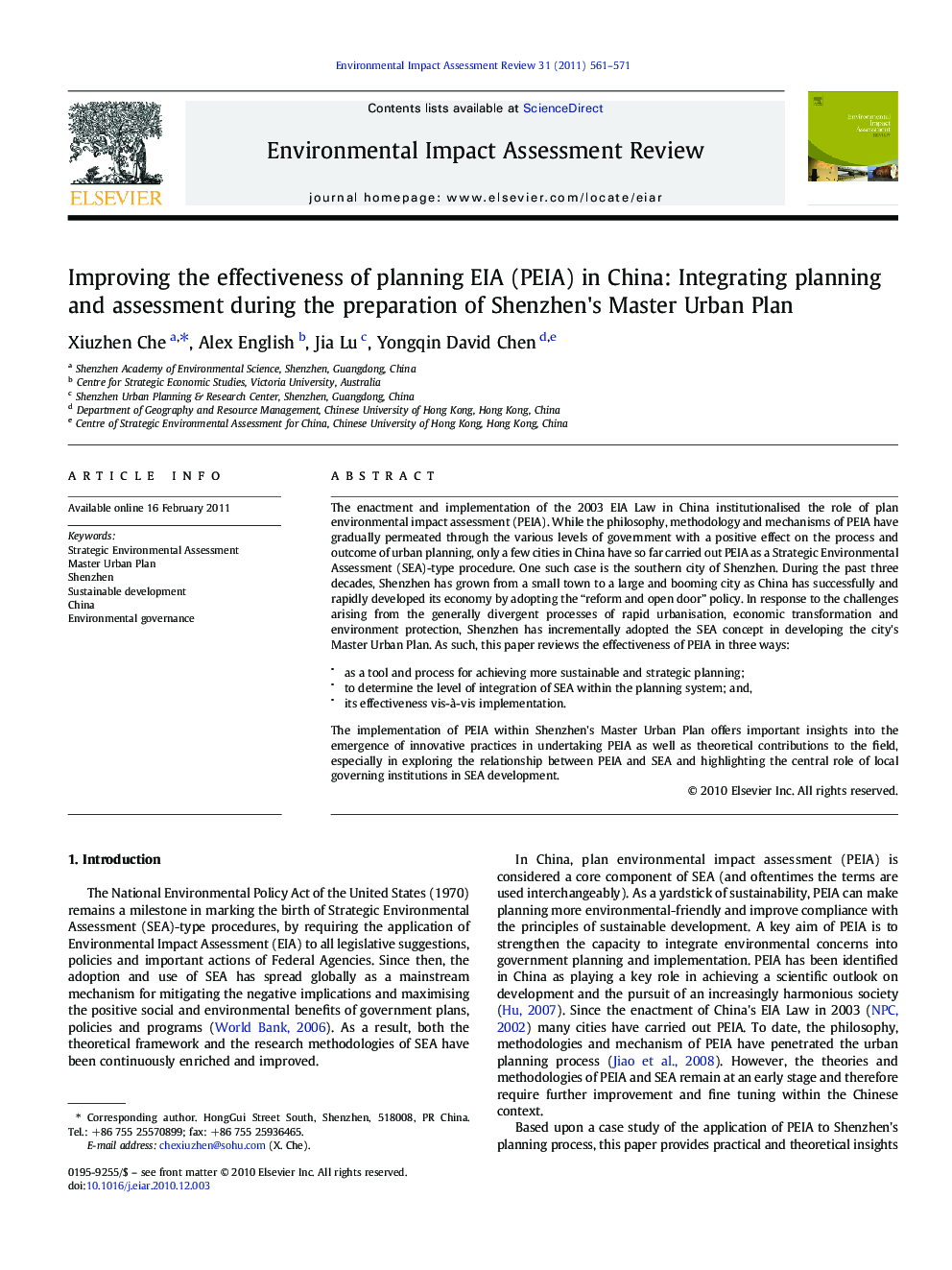| Article ID | Journal | Published Year | Pages | File Type |
|---|---|---|---|---|
| 1052912 | Environmental Impact Assessment Review | 2011 | 11 Pages |
The enactment and implementation of the 2003 EIA Law in China institutionalised the role of plan environmental impact assessment (PEIA). While the philosophy, methodology and mechanisms of PEIA have gradually permeated through the various levels of government with a positive effect on the process and outcome of urban planning, only a few cities in China have so far carried out PEIA as a Strategic Environmental Assessment (SEA)-type procedure. One such case is the southern city of Shenzhen. During the past three decades, Shenzhen has grown from a small town to a large and booming city as China has successfully and rapidly developed its economy by adopting the “reform and open door” policy. In response to the challenges arising from the generally divergent processes of rapid urbanisation, economic transformation and environment protection, Shenzhen has incrementally adopted the SEA concept in developing the city's Master Urban Plan. As such, this paper reviews the effectiveness of PEIA in three ways:•as a tool and process for achieving more sustainable and strategic planning;•to determine the level of integration of SEA within the planning system; and,•its effectiveness vis-à-vis implementation.The implementation of PEIA within Shenzhen's Master Urban Plan offers important insights into the emergence of innovative practices in undertaking PEIA as well as theoretical contributions to the field, especially in exploring the relationship between PEIA and SEA and highlighting the central role of local governing institutions in SEA development.
